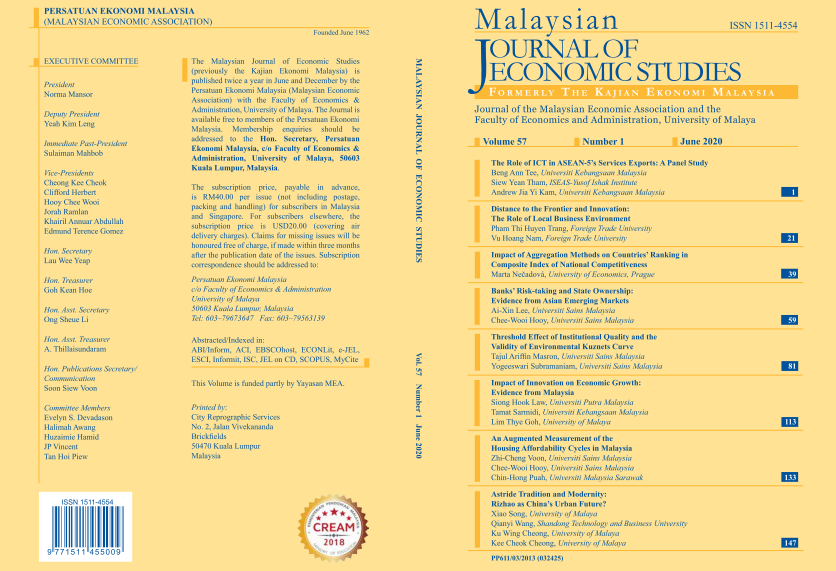An Augmented Measurement of the Housing Affordability Cycles in Malaysia
DOI:
https://doi.org/10.22452/MJES.vol57no1.7Keywords:
Housing affordability, housing policy, house prices, leading indicator, Markov regime switchingAbstract
Malaysia’s property market has been going through a difficult phase as the supply of property stocks are excessive with the demand unable to catch up, and hence, many unsold units remaining on the market. The primary aim of this paper is to develop an index-based housing affordability indicator known as the housing affordability leading index (HALI), which is based on the indicator compilation approach founded by the National Bureau of Economic Research (NBER). The time-varying Markov switching (TVMS) model is then employed to assess the transition probabilities of the constructed housing affordability indicator. The transition probabilities estimate the prospects of the housing affordability condition and how long it will stay in that particular condition before having any major turnover. As the data employed was monthly data from year 2000 to year 2015, the constructed HALI successfully reflects the prior movements of the non-index housing affordability indicator price to income ratios (PIR). The empirical results show that the HALI has an average leading period of 9.5 months when taking the PIR as a benchmark of coincidence indicator for housing affordability movement.

